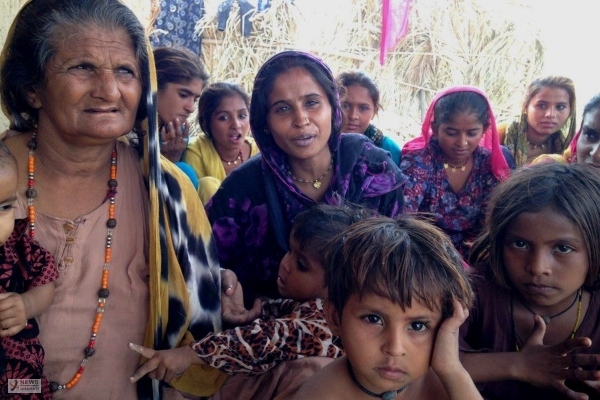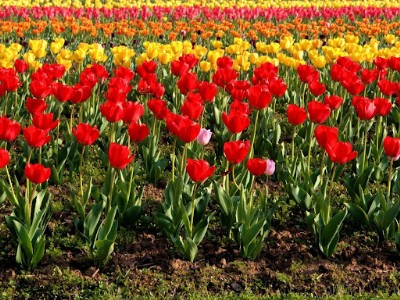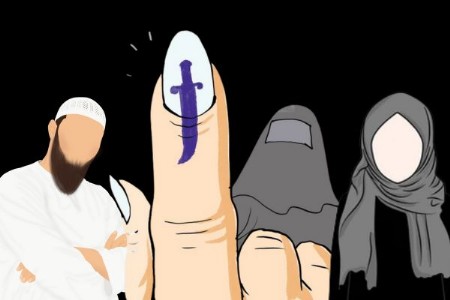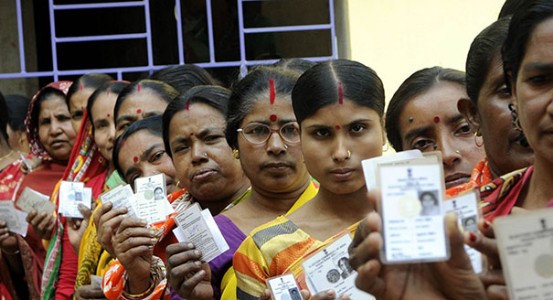The collapse of the Hindu population in Pakistan
According to the 1941 census, there were 2,373,466 Hindus living in Pakistan’s Punjab province of Pakistan, which was approximately 13.7% of the total population of the province.
Total Views | 949
The atrocities on the Hindu population are known to everyone. But when we put it in numbers, the scale of atrocities can stun even those who know about such atrocities. One such number is the Hindu population in Pakistan.

According to the 1941 census, there were 2,373,466 Hindus living in Pakistan’s Punjab province of Pakistan, which was approximately 13.7% of the total population of the province. The Hindu population in Pakistan’s Punjab declined from 2,373,466 in 1941 to 33,052 in 1951. The Hindu population has continued to decline in Pakistan’s Punjab in the years since 1951. According to the 2017 census, there were only 120,000 Hindus living in Pakistan’s Punjab, representing just 0.2% of the total population of the province.
Also Read: The Zamindari and the Princely States
There were 179,422 Hindus living in Lahore in 1941, which was approximately 26.71% of the total population of the city. The majority of Hindus in Lahore lived in the walled city, with large concentrations in the areas of Anarkali, Mozang, and Saddar. The Hindu population in Lahore declined from 179,422 in 1941 to 2,670 in 1951. The Hindu population has continued to decline in Lahore in the years since 1951. According to the 2017 census, there were only 2,000 Hindus living in Lahore, representing just 0.02% of the total population of the city. There were 249,872 Hindus living in the Multan district, which was approximately 16.83% of the total population of the district. The majority of Hindus in Multan lived in the walled city, with large concentrations in the areas of Bhatti Gate, Delhi Gate, and Mori Gate. The Hindu population in Multan declined from 249,872 in 1941 to 12,000 in 1951.
The Hindu population has continued to decline in Multan in the years since 1951. According to the 2017 census, there were only 1,000 Hindus living in Multan, representing just 0.02% of the total population of the district. There were 231,319 Hindus living in the Sialkot district, which was approximately 19.43% of the total population of the district. The majority of Hindus in Sialkot lived in the walled city, with large concentrations in the areas of Chowk Bazar, Kot Lakhpat, and Shahpur. The Hindu population in Sialkot declined from 231,319 in 1941 to 10,000 in 1951. The Hindu population has continued to decline in Sialkot in the years since 1951.
According to the 2017 census, there were only 500 Hindus living in Sialkot, representing just 0.01% of the total population of the district. There were 17,527 Hindus living in Kohat district, which was approximately 6.06% of the total population of the district. The majority of Hindus in Kohat lived in the areas of Kohat City, Lachi, and Darra Adam Khel. The Hindu population in Kohat declined from 17,527 in 1941 to 1,004 in 1951. The Hindu population has continued to decline in Kohat in the years since 1951. According to the 2017 census, there were only 500 Hindus living in Kohat, representing just 0.01% of the total population of the district.
The Hindu population has continued to decline in Multan in the years since 1951. According to the 2017 census, there were only 1,000 Hindus living in Multan, representing just 0.02% of the total population of the district. There were 231,319 Hindus living in the Sialkot district, which was approximately 19.43% of the total population of the district. The majority of Hindus in Sialkot lived in the walled city, with large concentrations in the areas of Chowk Bazar, Kot Lakhpat, and Shahpur. The Hindu population in Sialkot declined from 231,319 in 1941 to 10,000 in 1951. The Hindu population has continued to decline in Sialkot in the years since 1951.
According to the 2017 census, there were only 500 Hindus living in Sialkot, representing just 0.01% of the total population of the district. There were 17,527 Hindus living in Kohat district, which was approximately 6.06% of the total population of the district. The majority of Hindus in Kohat lived in the areas of Kohat City, Lachi, and Darra Adam Khel. The Hindu population in Kohat declined from 17,527 in 1941 to 1,004 in 1951. The Hindu population has continued to decline in Kohat in the years since 1951. According to the 2017 census, there were only 500 Hindus living in Kohat, representing just 0.01% of the total population of the district.
Also Read: Hindus in Pakistan Census
The Hindu population in Rawalpindi in 1941 was 82,178, which was approximately 10.50% of the total population of the city. The majority of Hindus in Rawalpindi lived in the walled city, with large concentrations in the areas of Saddar, Raja Bazaar, and Mohra Baqi. The Hindu population in Rawalpindi declined from 82,178 in 1941 to 2,000 in 1951. The Hindu population has continued to decline in Rawalpindi in the years since 1951. According to the 2017 census, there were only 1,000 Hindus living in Rawalpindi, representing just 0.02% of the total population of the city.
The total collapse of the Hindu population due to the continuous persecution, conversion, rape, and killings of Hindus can be seen through these numbers.
Bharati Web







